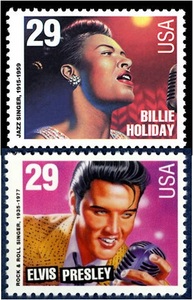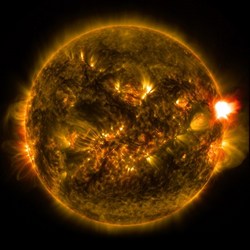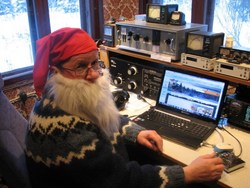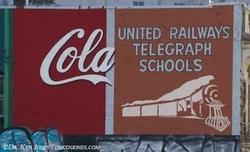 January 14, 2015 Editor: Ward Silver, NØAX | ||||||
IN THIS ISSUE
NEW HF OPERATORS - THINGS TO DO Are you wondering what to do now that the ARRL's Centennial QSO Party is over? Try the NCJ's small-station-friendly North American QSO Party this coming Saturday. Operate on phone with 100 watts or less for 10 hours out of the 12-hour period starting at 1800Z, exchanging your name and state or country. It's big fun and you won't miss a single down of the football playoffs! BULLETINS If you are planning on operating in the ARRL January VHF Contest, be aware of the new Single-Op Unlimited categories that are available in ARRL VHF contests. For more information about the category, see the contest web page's Overview section "Unlimited Categories and Spotting Assistance FAQ". BUSTED QSOS The NS RTTY Sprint (Thursday evenings in the U.S.) was omitted from the contest listings in the previous issue. This short event precedes the usual NS Ladder sprints. (Thanks, Ken K6MR) CONTEST SUMMARY Complete information for all contests follows the Conversation section Jan 17-18
Jan 24-25
Do you have any nominations for the CQ Hall of Fame? CQ WW Director, Randy K5ZD notes that nominations must be in by March 1 and be made by a contest or DX club or a national ham radio organization. The full procedure for all of the CQ Hall of Fame awards is online. Nominations from earlier years are not held for future consideration so renomination is required. Two people are inducted into each Hall of Fame every year.
The North Coast Contesters 23rd Annual Dayton Contest Dinner is now available for ticket sales via the website (no at-the-door sales) which has been provided by KA9FOX and QTH.com. The featured speaker this year is ARRL President, Kay Craigie N3KN. 2015 Contest Hall of Fame inductees will be announced and Icom America has donated an IC-7600 transceiver as the main door prize. The dinner is held on Saturday night of the Hamvention - May 16th in 2015 - at the Crowne Plaza Hotel. While you're at the Crowne Plaza, take in the Contest SuperSuite and all the other contest-related goings-on! (Thanks, Tim K3LR) Four years ago, Bryce K7UA wrote a series of short articles for his local DX club called the "New DXer's Handbook." Bryce tells us "The original has become outdated and wasn't written for a broad audience in the first place" but a revised second edition is now available free of charge. (Thanks, Daily DX) Simone MØBOX, new Contest Manager for the British Amateur Radio Teledata Group (BARTG), reports that an email robot log submission system has been put in place. "From the March HF Contest onwards, the entry window for all BARTG contests will be reduced from 30 days to 7 days. There will be a period of 21 days in which I will run the logs through adjudication and email entrants with any queries that are raised. Final adjudication will then take place after the expiration of the 21 days query window. Logs submitted after entries close may be accepted, but the entrant will need to email me to advise me of their late submission as I will not otherwise redownload logs from the robot after the 7 day period has elapsed." Bob N6TV has published a number of very interesting presentations on the use of SDR and other tools in your favorite radiosport events. This is a great way to get up to speed - thanks, Bob!
Japan has a new band plan, published by the Japanese Amateur Radio League (JARL). The JA allocations on 160 and 80/75 meters are somewhat fragmented so it is important for DX contesters to have the latest information! (Thanks, Daily DX) The group sponsoring the non-NCJ SSB Sprint contest has their website up and running. The next edition of the contest will start at 0000Z on Feb 1st. Rules for the 2015 NCJ NAQP and Sprint contests are now available online, as well. (Thanks, Mike W9RE and Kirk K4RO) Did you know that there were originally 20 of Maxwell's equations? True! Jim AJ3K has written a wonderful article in the December 2014 issue of IEEE Spectrum, "The Long Road to Maxwell's Equations" explaining how they came to be and then took their final form as the four we use today. Al K2UYH publishes a monthly EME newsletter, 432 and Above, which is available online and free, including archived back copies. You can also subscribe to receive a copy by email each month. If you are interested in moonbounce at UHF and microwave, this is a must-read publication. Weak-signal VHF+ DXers and contesters will find a lot of useful material, too.
Web Site of the Week - If your computer is powerful enough and you have a QS1R SDR, you can now auto-spot both RTTY and CW stations on multiple bands using Alex VE3NEA's latest software creation, RTTY Skimmer Server. (Thanks, Bob N6TV) WORD TO THE WISE Bob K2DRH, has written an excellent FAQ on VHF+ contesting with plenty to offer any VHF+ operator. It's published by the Society of Midwest Contesters along with lots of other useful how-to information, such as the FAQs for Getting Started in Contesting, Antennas, and RTTY, among others. (Thanks, Chad WE9V) What does rare DX sound like? Tom K8CX has posted 152 MP3 sound clips of various rare DX stations at his Ohio station during the past year. Tom is also looking for pre-1998 sound clips to add to the site. If you have some old recordings of "the greats,", operators and expeditions alike, putting them online would be a great way to preserve these sounds for everyone to hear into the future. (From Daily DX) Here's a short highlight of the great 10 Meter Contest from an Australian perspective! Peter VK2PV recorded this video from the VK2GGC station. When we're in the next solar minimum, it will be fun to pull this up and listen to what will then be the "good old days!" David WA1OUI found a video showing how the explosive splicing technique featured in the previous issue actually works. This takes the concept of "crimp connector" to an entirely new level! If it startles you to hear a mobile phone ringing like an old desk model from Ma Bell, you'll probably enjoy visiting the Museum of Endangered Sounds. There's a related thread on the Slashdot website, "Sounds We Don't Hear Any More" that is full of interesting comments, as well. The results of 2014 Worked All Germany Contest are final. Besides the scores there is a detailed web report with pictures and audio clips, along with activity overviews and band-by-band breakdowns. (Thanks, WAG Manager, Chris DL8MBS) DX results of the 2014 ARI International DX Contest have been published. Participants will also receive an email with a UBN file (log checking report) attached. (Thanks, ARI Manager, Bob I2WIJ) OPERATING TIP Call CQ - They can't work you if they can't hear you! Classic and timeless advice from the Mt Airy VHF Club Cheese Bits.
Have you been watching NOAA's new five-graph solar weather chart? Mike WØBTU is a big fan, "I'm beginning to realize that chart was a real stroke of genius...you have to watch and study it for a few weeks and you'll see what I mean. When that "fuzz" (all those dots) turned into almost a straight line the other day, the conditions on 80 meters really improved! Same for 20 meters." Mike also recommends the Space Weather Enthusiasts page which includes radio blackout information. Victor US5WE notes that a similar site from Russia is available, too. We should tip our caps to pages by NW7US and CT1BOH which have supplied similar material to hams for quite some time. Just the right thing for your portable toolkit and a use for that finger-friendly old mechanical pencil, too - a solder-filled dispensing pen! Note this important precaution from Roger K8RI about working on metal with rotating tools: When the shavings start peeling off never, ever try to brush them away by hand. They are sharp and if the bit (or whatever) grabs them at the same time you do, those shavings can remove finger(s) so quickly and cleanly you won't know it happened at the moment. Grant KZ1W provides a related warning: NEVER wear gloves! Glove material can catch on the drill bit, lathe chuck, mill chuck etc. The glove finger then grips the finger too tightly to get out of quickly and the resulting injury can be quite serious. The chips and swarf in drilling, milling, and turning operations should be managed with a chip hook about 12 to 18" long, coolant flushing, or air blast. Better yet, "peck drill" so that short chips are made. An interesting resolution for the New Year would be to cobble together a transmitter from a design published the year you were born. (Thanks to the QRP-L community for the idea) For many years a treadmill in Don WD8DSB's house caused strong interference on 160 meters when it was in use but he has been able to completely eliminate the RFI using a combination of two different filters (a commercial line filter that provides both common-mode and differential-mode filtering, and 14 turns of the power cord on a 2.4" OD Fair-Rite #31 mix toroid core. You can review his tests and filters for your own problem RFI solutions, too. A good source of practical information on how to select a station site can be found in NBS Technical Note 139, Siting Criteria for HF Communication Centers by William Utlat. Dating from 1962, it's still quite useful today. (Thanks, Sinisa, YT1NT/VE3EA) From the EDN "Design Ideas" column - the professional EE equivalent of Hints and Kinks - comes this useful op-amp design for a notch filter. While you're looking at those miraculous triangles of gain, do you know how they achieve it? Similar to the kit showing how the 555 timer chip's internal electronics do what they do, the XL741 kit does the same for the venerable 741 op-amp.
The screen capture at right is from a video showing NASA's Interface Region Imaging Spectrograph's (IRIS) view of an area of the Sun. Multiple images of this area were taken in different wavelengths. Each of the images carried information about how fast the solar material is moving, which has shown scientists that a series of loops are twisting in the sun's lower atmosphere, generating mini-tornadoes on the sun's surface. This result is from one of five papers in the Oct. 17, 2014, issue of Science magazine based on IRIS data, highlighting different aspects of solar energy's journey from the Sun's surface through its atmosphere. (Thanks, NASA/IRIS/Pereira) Technical Web Site of the Week - This fascinating video shows the SBSpectrum software capturing the shifts in frequency for a signal propagating through the ionosphere. The time-lapse video compresses hours of recording time into a few minutes. You can see the ionosphere's individual layers come and go, rise and fall, and do all sorts of interesting things to the signal. This is a big part of why HF digital communication is so hard! (Thanks, Dennis N6KI and Bob W6VR) Come On In! At this weekend's memorial gathering for Carl AI6V, a common theme among the memories and stories shared by friends was his ability to reach out and instantly make someone new to ham radio (or auto racing, his other avocation) feel a part of the tribe. I can count such an experience with Carl in my history and I can tell you that it had a positive impact on me. It doesn't matter whether we are talking about a contesting legend like Carl or a senior in a high-school club, having someone you respect make the effort to include you in a group is an important ingredient for success and enjoyment in ham radio. In an activity that by definition cannot be performed alone, being part of the team makes all the difference in the world.
Professionals recognize that mentoring is critical to success and provide training in doing just that. The ham community can take many cues from these programs. It is not enough to help a person pass their test then expect them to sink or swim on their own. Very few of us took the solo route - there was an Elmer or a peer group or a club to make us part of the ham family. At your next club meeting or even a group hanging around a hamfest table, keep a watchful eye for the person who wants to join in but needs an invitation or might be waiting for the right moment. Take the initiative and extend that invitation or make that moment. That's your job as someone in the group, to expand the group. What have you got to lose? Nothing - you'll gain a friend and maybe launch a lifetime ham. Numbers of hams are at all-time highs here in the United States but there are an awful lot of tickets that won't be renewed, even after all that effort was made to pass the test. Will we be able to hold on to our newest members? Not if they don't feel like part of the grand family of hams! Without a personal connection, we will lose them forever. The most powerful words you may ever say to another ham are probably not technical advice or some secret operating tip, they are "Come on in!" 14 January through 27 January An expanded, downloadable version of QST's Contest Corral in PDF format is available. Check the sponsor's Web site for information on operating time restrictions and other instructions. HF CONTESTS North American QSO Party--Phone, from Jan 17, 1800Z to Jan 18, 0559Z. Bands (MHz): 1.8-28. Exchange: Name and S/P/C. Logs due: 7 days. Rules Linc Cundall Memorial CW Contest--CW, from Jan 14, 2300Z - See website. Multiple time periods. Bands (MHz): 1.8-7. Exchange: See website. Logs due: 30 days. Rules NAQCC Special 160M Sprint--CW, from Jan 16, 0130Z to Jan 16, 0330Z. Bands (MHz): 1.8. Exchange: RST, S/P/C, and NAQCC mbr nr or power. Logs due: 4 days. Rules YLISSB QSO Party--Phone, from Jan 17, 0000Z to Jan 18, 2359Z. Bands (MHz): 1.8-28. Exchange: Call sign, RS(T), ISSB number. Logs due: Mar 20. Rules LZ Open Contest--CW, from Jan 17, 0000Z to Jan 17, 0400Z. Bands (MHz): 3.5, 7. Exchange: 6-digit serial and serial from previous QSO. Logs due: 30 days. Rules International United Teenager Contest--Phone,CW, from Jan 17, 0600Z to Jan 17, 1400Z. Bands (MHz): 3.5-28. Exchange: RS(T) and age or "RT". Logs due: 30 days. Rules HA DX Contest--Phone,CW, from Jan 17, 1200Z to Jan 18, 1200Z. Bands (MHz): 1.8-28. Exchange: RS(T) and serial or HADXC member nr or HA county. Logs due: 30 days. Rules Feld-Hell Low-Down Sprint--Digital, from Jan 17, 2000Z - See website. Multiple time periods. Bands (MHz): 1.8-7. Time period depends on location - see website. Exchange: RST, S/P/C, Feld-Hell member nr. Logs due: 7 days. Rules Classic Exchange--CW, from Jan 18, 1400Z to Jan 19, 0800Z. Bands (MHz): 1.8-28, 50, 144, CW 1.810, 3.545, 7.045, 14.045, 21.135, 28.050, 50.100, 144.100 MHz. Exchange: RST, QTH, model of rcvr and xmtr. Logs due: 30 days. Rules Run For the Bacon--CW, from Jan 19, 0200Z to Jan 19, 0400Z. Bands (MHz): 1.8-28. Monthly on 3rd Sunday night (local). Exchange: RST, S/P/C, Flying Pig nr or power. Rules Locust QSO Party--CW, from Jan 21, 0200Z to Jan 21, 0256Z. Bands (MHz): 3.5-7. 3.550, 7.050 MHz. Exchange: Name, state or province or 'DX'. Logs due: Jan 31. Rules NAQCC Monthly QRP Sprint--CW, from Jan 22, 0130Z to Jan 22, 0330Z. Bands (MHz): 3.5-14. Monthly on 2nd Tuesday or 3rd Wednesday local time (alternating). Exchange: RST, S/P/C, and NAQCC mbr nr or power. Logs due: 4 days. Rules CQ WW 160 Meter Contest--CW, from Jan 23, 2200Z to Jan 25, 2200Z. Bands (MHz): 1.8. Exchange: RST and S/P/C. Logs due: 5 days. Rules REF French Contest--CW, from Jan 24, 0600Z to Jan 25, 1800Z. Bands (MHz): 3.5-28. Exchange: RST and serial or department ID. Logs due: 15 days. Rules BARTG RTTY Sprint--Digital, from Jan 24, 1200Z to Jan 25, 1200Z. Bands (MHz): 3.5-28. Exchange: Serial. Logs due: Mar 1. Rules Winter Field Day--Phone,CW,Digital, from Jan 24, 1700Z to Jan 25, 1700Z. Bands (MHz): 1.8-28, 50+. Exchange: Category, ARRL section, local temp. Logs due: Feb 28. Rules WAB Top Band Phone Contest--Phone, from Jan 24, 1900Z to Jan 24, 2300Z. Bands (MHz): 1.8. Exchange: See website. Logs due: 21 days. Rules QRP Winter Fireside SSB Sprint--Phone, from Jan 25, 2000Z to Jan 25, 2359Z. Bands (MHz): 3.5-28. QRP calling frequencies. Exchange: RS, S/P/C, QRP ARCI number or power. Logs due: 14 days. Rules VHF+ CONTESTS ARRL January VHF Contest--Phone,CW, from Jan 24, 1900Z to Jan 26, 0359Z . Bands (MHz): 50+. Exchange: 4-char grid square. Logs due: Feb 25. Rules Classic Exchange--CW, from Jan 18, 1400Z to Jan 19, 0800Z. Bands (MHz): 1.8-28, 50, 144, CW 1.810, 3.545, 7.045, 14.045, 21.135, 28.050, 50.100, 144.100 MHz. Exchange: RST, QTH, model of rcvr and xmtr. Logs due: 30 days. Rules Winter Field Day--Phone,CW,Digital, from Jan 24, 1700Z to Jan 25, 1700Z. Bands (MHz): 1.8-28, 50+. Exchange: Category, ARRL section, local temp. Logs due: Feb 28. Rules LOG DUE DATES 14 January through 27 January
ARRL Information Click here to advertise in this newsletter, space subject to availability. Your One-Stop Resource for Amateur Radio News and Information ARRL membership includes QST, Amateur Radio's most popular and informative journal, delivered to your mailbox each month. Subscribe to NCJ - the National Contest Journal. Published bimonthly, features articles by top contesters, letters, hints, statistics, scores, NA Sprint and QSO Parties. Subscribe to QEX - A Forum for Communications Experimenters. Published bimonthly, features technical articles, construction projects, columns and other items of interest to radio amateurs and communications professionals. Free of charge to ARRL members: Subscribe to The ARRL Letter (weekly digest of news and information), the ARES E-Letter (monthly public service and emergency communications news), Division and Section news -- and much more! ARRL offers a wide array of products to enhance your enjoyment of Amateur Radio. Visit the site often for new publications, specials and sales. Donate to the fund of your choice -- support programs not funded by member dues! Reprint permission can be obtained by sending email to permission@arrl.org with a description of the material and the reprint publication. ACKNOWLEDGEMENTS ARRL Contest Update wishes to acknowledge information from WA7BNM's Contest Calendar and SM3CER's Contest Calendar. | ||||||











